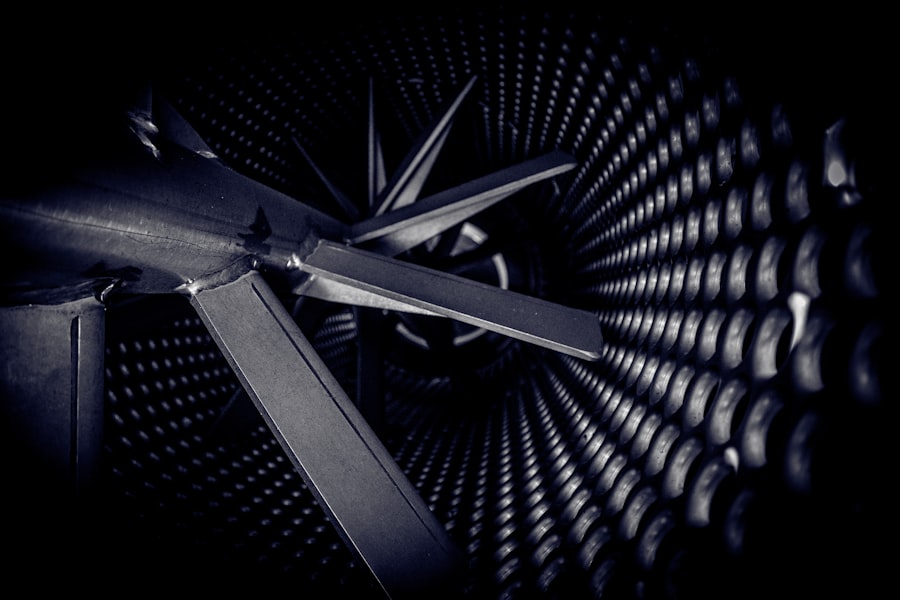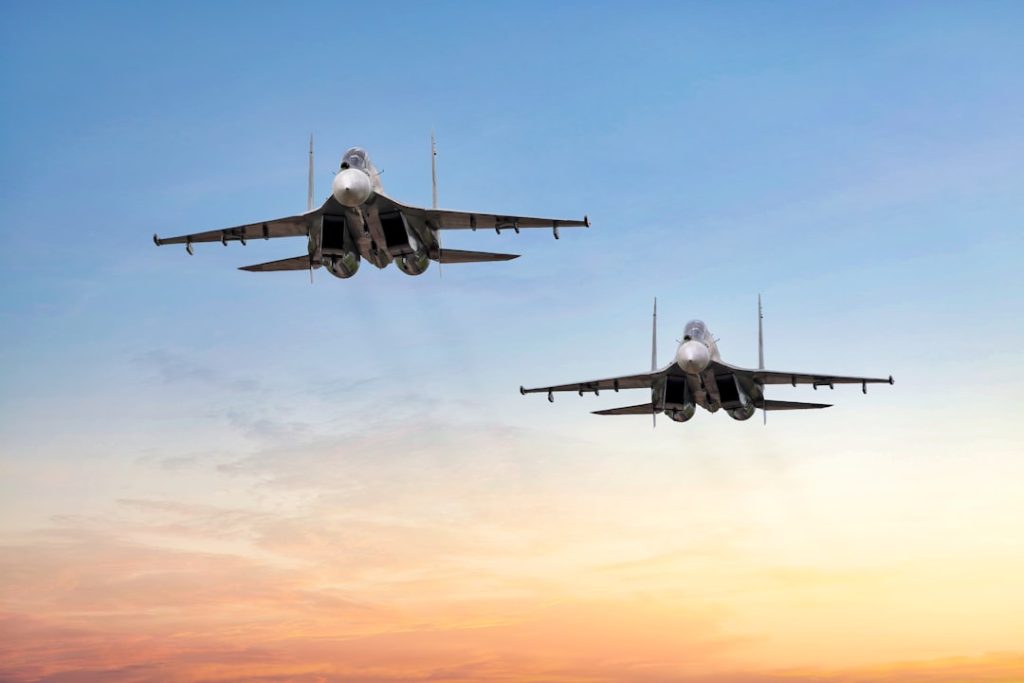The aerospace defense industry is a critical sector that encompasses the design, development, and production of military aircraft, spacecraft, and related systems. This industry plays a pivotal role in national security, providing advanced technologies that enable countries to protect their sovereignty and maintain strategic advantages. The aerospace defense sector is not only about manufacturing; it also involves extensive research and development, testing, and integration of complex systems that can operate in diverse environments.
The industry’s significance is underscored by its contributions to both military and civilian applications, as many technologies developed for defense purposes eventually find their way into commercial aviation and space exploration. Historically, the aerospace defense industry has evolved through various phases, driven by technological advancements and geopolitical dynamics. The Cold War era saw a significant escalation in defense spending and innovation, leading to the development of advanced fighter jets, missile systems, and satellite technologies.
In recent years, the focus has shifted towards integrating cutting-edge technologies such as artificial intelligence, unmanned systems, and cyber capabilities into defense platforms. As nations face new threats ranging from cyber warfare to asymmetric conflicts, the aerospace defense industry continues to adapt and innovate to meet these challenges.
Key Takeaways
- The aerospace defense industry is a crucial sector that focuses on the development and production of military aircraft, weapons systems, and defense technologies.
- Current trends in aerospace defense technology include the use of artificial intelligence, unmanned aerial vehicles, and advanced radar and sensor systems.
- The global market for aerospace defense is expected to grow due to increasing defense budgets, geopolitical tensions, and the demand for advanced defense technologies.
- Key players in the aerospace defense industry include Lockheed Martin, Boeing, Northrop Grumman, and Raytheon, who face intense competition in the market.
- Emerging technologies in aerospace defense, such as hypersonic weapons, directed energy weapons, and space-based defense systems, are shaping the future of the industry.
Current Trends in Aerospace Defense Technology
One of the most prominent trends in aerospace defense technology is the increasing reliance on unmanned aerial vehicles (UAVs), commonly known as drones. These systems have transformed modern warfare by providing real-time intelligence, surveillance, and reconnaissance capabilities without risking human lives. Countries around the world are investing heavily in drone technology, leading to advancements in autonomy, payload capacity, and operational range.
For instance, the U.S. military has deployed various UAVs like the MQ-9 Reaper for combat missions and intelligence gathering, showcasing their effectiveness in contemporary conflict scenarios. Another significant trend is the integration of artificial intelligence (AI) into aerospace defense systems.
AI technologies are being utilized to enhance decision-making processes, improve threat detection, and optimize mission planning. For example, AI algorithms can analyze vast amounts of data from multiple sources to identify potential threats more quickly than human operators. Additionally, AI is being employed in simulation training for pilots and ground personnel, allowing for more realistic training scenarios that can adapt to individual learning curves.
This trend not only increases operational efficiency but also reduces costs associated with traditional training methods.
Global Market Analysis for Aerospace Defense

The global aerospace defense market is characterized by its complexity and diversity, encompassing a wide range of products and services. According to various market research reports, the industry is projected to experience steady growth over the next decade, driven by increasing defense budgets in emerging economies and ongoing geopolitical tensions. North America remains a dominant player in this market, primarily due to the presence of major defense contractors such as Lockheed Martin, Boeing, and Northrop Grumman.
The U.S. government’s substantial investments in defense technology further bolster this region’s market position. In contrast, regions like Asia-Pacific are witnessing rapid growth in aerospace defense spending as countries like India, China, and Japan enhance their military capabilities.
The rise of China as a global superpower has prompted neighboring nations to invest in advanced defense technologies to counterbalance its influence. Additionally, partnerships between governments and private companies are becoming more common in this region, facilitating technology transfer and joint development programs. This dynamic landscape presents both opportunities and challenges for companies operating within the aerospace defense sector.
Key Players and Competition in the Aerospace Defense Industry
| Company | Market Share | Revenue (in billions) | Number of Employees |
|---|---|---|---|
| Boeing | 25% | 58.16 | 153,000 |
| Lockheed Martin | 20% | 59.81 | 110,000 |
| Northrop Grumman | 15% | 33.84 | 90,000 |
| Raytheon Technologies | 12% | 77.05 | 195,000 |
The aerospace defense industry is home to several key players that dominate the market through their technological prowess and extensive portfolios. Companies such as Lockheed Martin, Boeing, Raytheon Technologies, and Northrop Grumman are at the forefront of innovation and production in this sector. These firms not only manufacture military aircraft and systems but also engage in research and development to create next-generation technologies that meet evolving defense needs.
Their competitive advantage often stems from their ability to secure government contracts and maintain long-term relationships with military organizations worldwide. Competition within the aerospace defense industry is fierce, with companies constantly striving to outpace one another through innovation and strategic partnerships. For instance, collaborations between defense contractors and technology firms are becoming increasingly common as companies seek to leverage expertise in areas such as cybersecurity and AI.
Additionally, emerging players from countries with growing defense sectors are entering the market, intensifying competition further. This competitive landscape necessitates continuous investment in research and development to stay ahead of technological advancements and meet the demands of modern warfare.
Emerging Technologies and Innovations in Aerospace Defense
Emerging technologies are reshaping the aerospace defense landscape, with innovations such as hypersonic weapons, directed energy systems, and advanced materials gaining prominence. Hypersonic weapons, which can travel at speeds exceeding Mach 5, represent a significant leap in offensive capabilities. Countries like Russia and China have made substantial progress in developing these systems, prompting other nations to accelerate their own hypersonic programs to maintain strategic parity.
Directed energy systems, including laser weapons and high-powered microwave systems, are also gaining traction within the aerospace defense sector. These technologies offer precise targeting capabilities with minimal collateral damage compared to traditional munitions. The U.S.
Navy has been testing laser weapon systems aboard its ships as a cost-effective means of defending against aerial threats such as drones or missiles. Furthermore, advancements in materials science are leading to the development of lighter yet stronger materials for aircraft construction, enhancing performance while reducing fuel consumption.
Government Policies and Regulations Impacting the Aerospace Defense Industry

Government policies play a crucial role in shaping the aerospace defense industry by influencing funding levels, procurement processes, and regulatory frameworks. In many countries, defense budgets are closely tied to national security priorities and geopolitical considerations. For instance, the U.S. government allocates a significant portion of its budget to defense spending, which directly impacts contracts awarded to aerospace defense companies. Changes in administration can lead to shifts in policy priorities that affect funding for specific programs or technologies. Regulatory frameworks also govern how companies operate within the aerospace defense sector. Compliance with export control laws is essential for manufacturers seeking to sell their products internationally. The International Traffic in Arms Regulations (ITAR) in the United States restricts the export of defense-related articles and services to ensure national security interests are protected. Companies must navigate these regulations carefully to avoid penalties while pursuing global market opportunities.
Future Outlook and Predictions for the Aerospace Defense Industry
The future of the aerospace defense industry appears promising yet complex as technological advancements continue to reshape its landscape. Analysts predict that the integration of AI will become even more pronounced in military operations over the next decade. As autonomous systems become more capable of performing complex tasks without human intervention, they will likely play a central role in future combat scenarios.
This shift may lead to new operational paradigms where human operators focus on strategic decision-making while machines handle tactical execution. Moreover, sustainability is expected to become a key consideration for aerospace defense companies as environmental concerns gain prominence globally. The industry may see increased investment in green technologies aimed at reducing carbon footprints associated with military operations.
Initiatives such as developing hybrid-electric propulsion systems for military aircraft could emerge as viable solutions that align with broader sustainability goals while maintaining operational effectiveness.
Challenges and Opportunities for the Aerospace Defense Industry
While the aerospace defense industry faces numerous opportunities for growth and innovation, it also grapples with significant challenges that could impact its trajectory. One major challenge is the increasing complexity of modern warfare, which requires rapid adaptation to new threats such as cyberattacks and asymmetric warfare tactics employed by non-state actors. Defense contractors must invest heavily in research and development to stay ahead of these evolving threats while ensuring their products remain relevant.
Additionally, supply chain disruptions have emerged as a critical concern for aerospace defense manufacturers. The COVID-19 pandemic highlighted vulnerabilities within global supply chains, leading to delays in production schedules and increased costs for raw materials. Companies must develop more resilient supply chain strategies that can withstand unforeseen disruptions while maintaining efficiency.
Conversely, opportunities abound for companies willing to embrace innovation and adapt to changing market dynamics. The growing demand for advanced technologies such as UAVs and AI-driven systems presents avenues for expansion within both military and commercial sectors. Furthermore, international collaborations on defense projects can facilitate knowledge sharing and accelerate technological advancements across borders.
In conclusion, the aerospace defense industry stands at a crossroads where technological innovation meets geopolitical realities. As nations navigate an increasingly complex security landscape, the industry’s ability to adapt will determine its future success amidst challenges and opportunities alike.


